
Smart TV reminder system
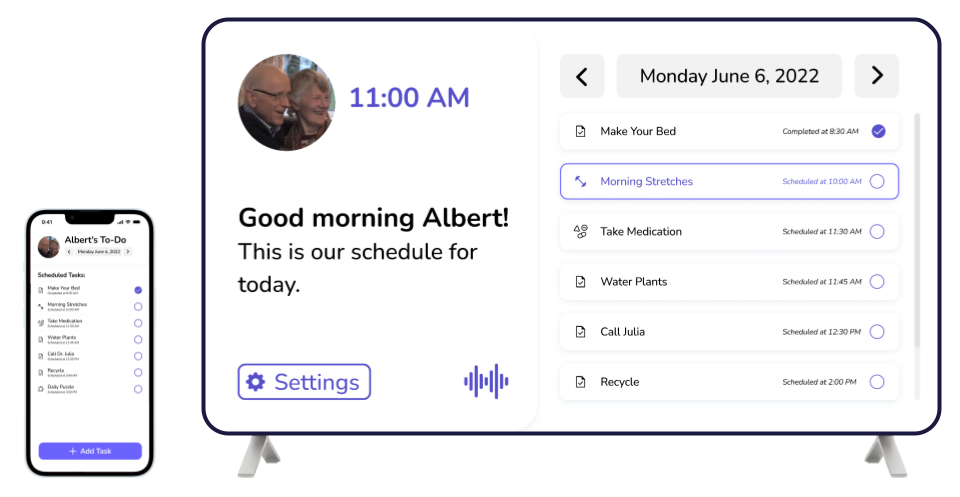
TOOLS USED
Figma, Adobe Illustrator
SKILLS DEVELOPED
User Research, UX
Timeline
5 Weeks
May - June 2022

Smart TV reminder system

TOOLS USED
Figma, Adobe Illustrator
SKILLS DEVELOPED
User Research, UX
Timeline
5 Weeks
May - June 2022
A routine can help people with dementia, but remembering daily tasks can be challenging. Being constantly reminded by others can make people with dementia feel dependent on their caregivers. How might we encourage routines to give people with dementia a sense of independence?
Independence. People with dementia want to feel independent but it is challenging to feel this way when they are constantly reminded what to do by their caregivers.
Entertainment. Caregivers need ways to maintain their loved ones entertained during the day to catch up with their daily personal activities.
Peace of mind. Caregivers need to keep track of important activities their loved ones have to perform during the day.
Memo is a smart TV app that allows seniors with dementia be reminded of daily tasks and be entertained with activities that offer mental, physical and social stimulation such as games, exercises, photographs, and music. Caregivers can set these reminders and activities and get notified when they are completed through the Memo smartphone app to monitor from a distance.
We compared direct and indirect competitors and learned ways to provide more value to caregivers and people with dementia.

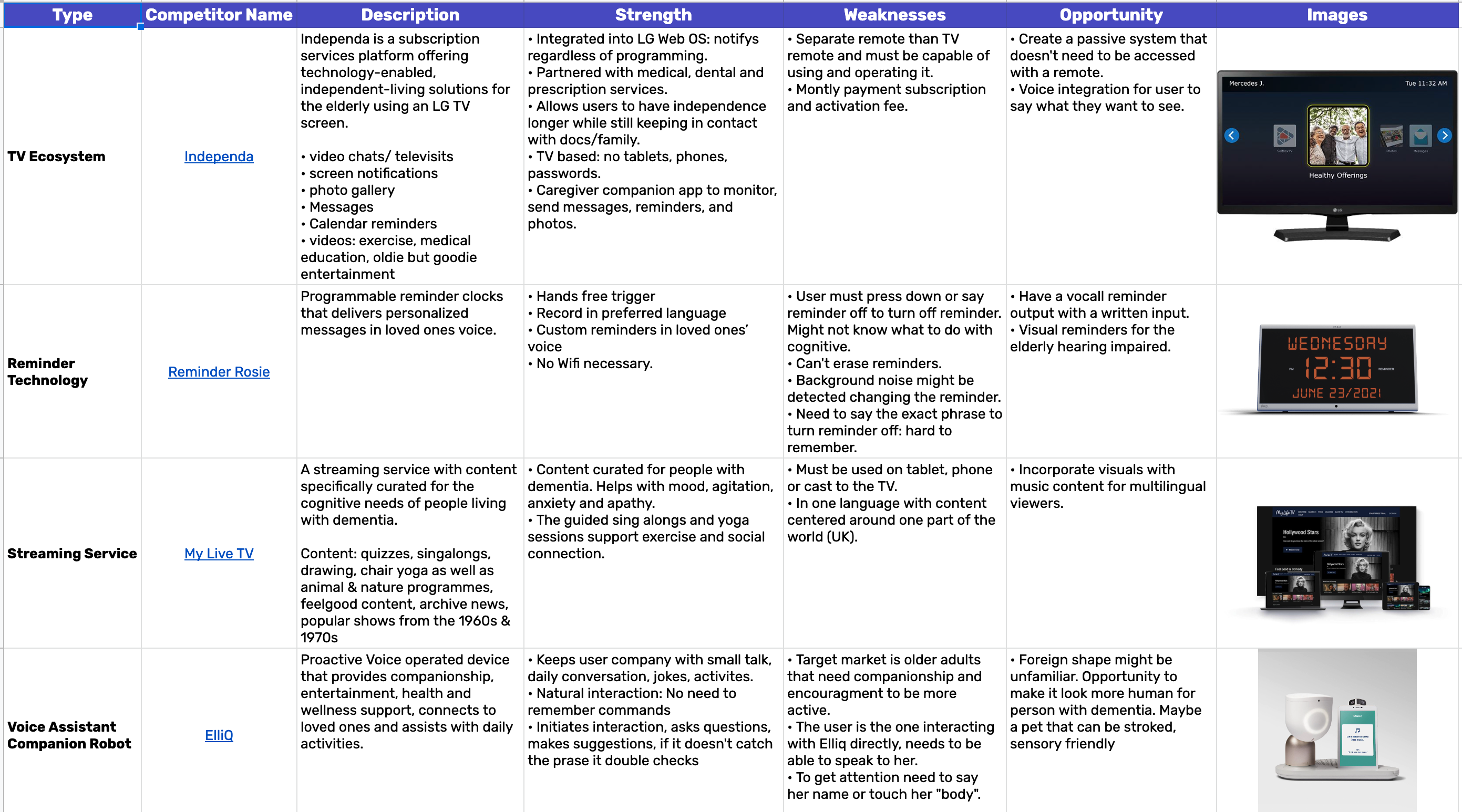
We researched articles related to everyday problems of people with dementia and tools they use to improve their way of living.
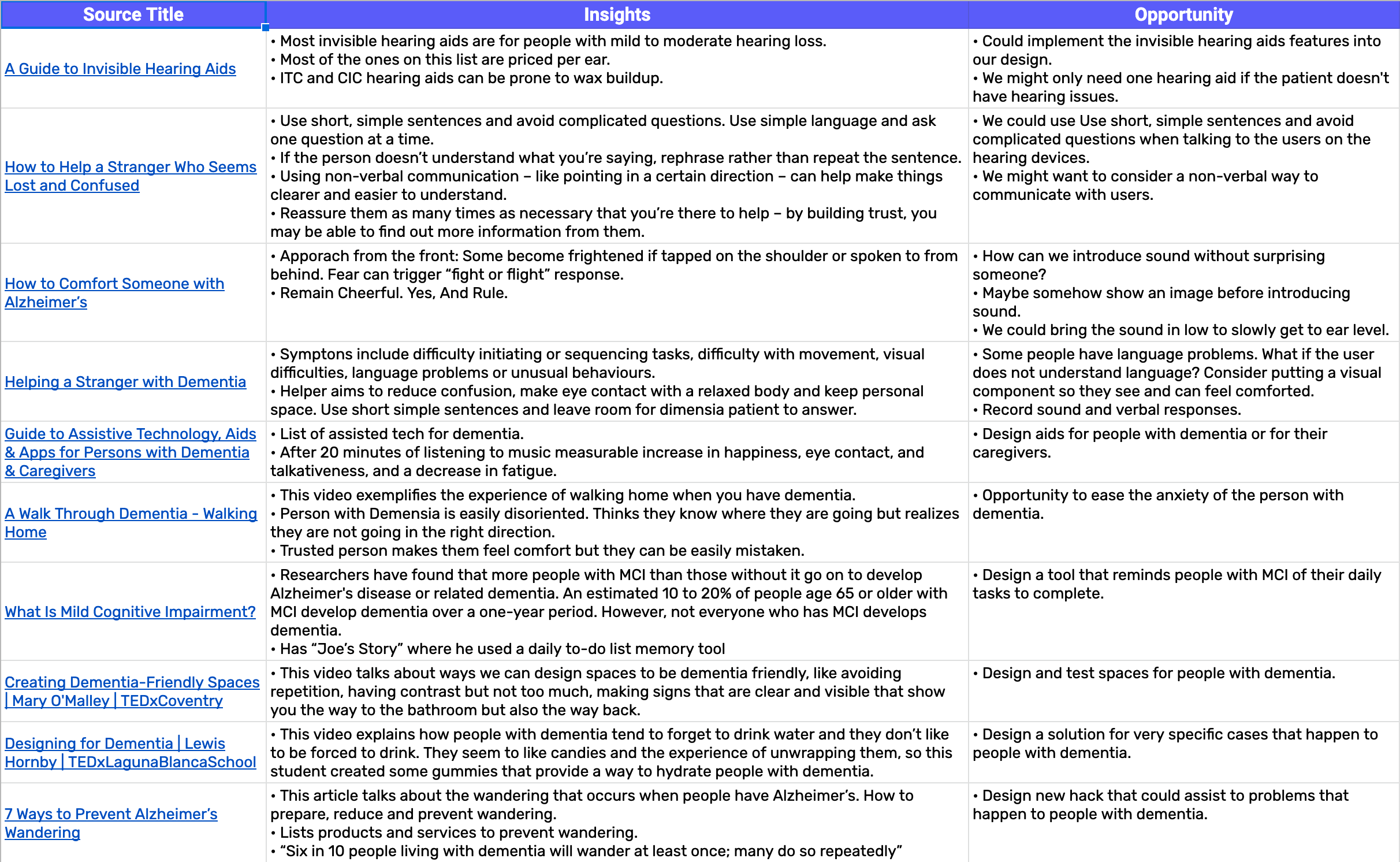
We reviewed dementia subreddits and forums for people with dementia and caregivers to understand their experiences, needs and pain points.
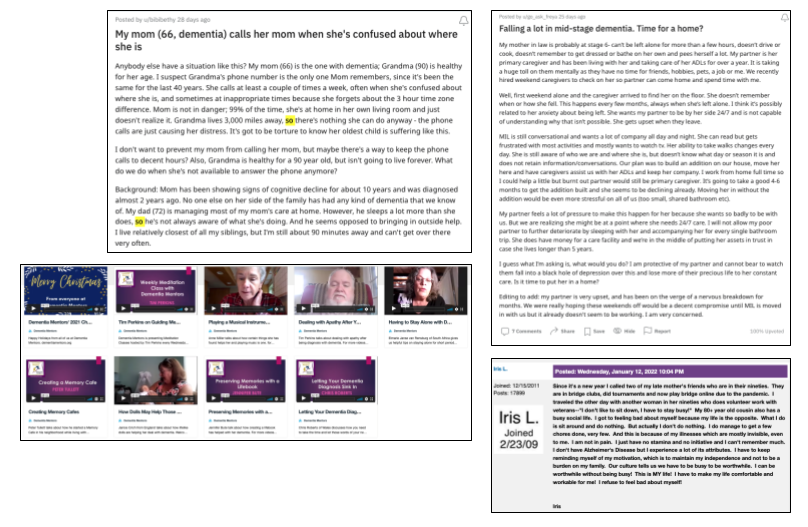
We interviewed the caregivers of a person with dementia. These interviews helped us understand important needs from dementia people and their caregivers, which made us decide to switch gears from our original ideas to ones that address these needs.
"He doesn’t like anyone telling him what he needs to do. He still feels like she's independent."

“The cost of living here sucks. Let me just leave it at that. But what makes it worth it is the culture and the diversity, everybody that's here”
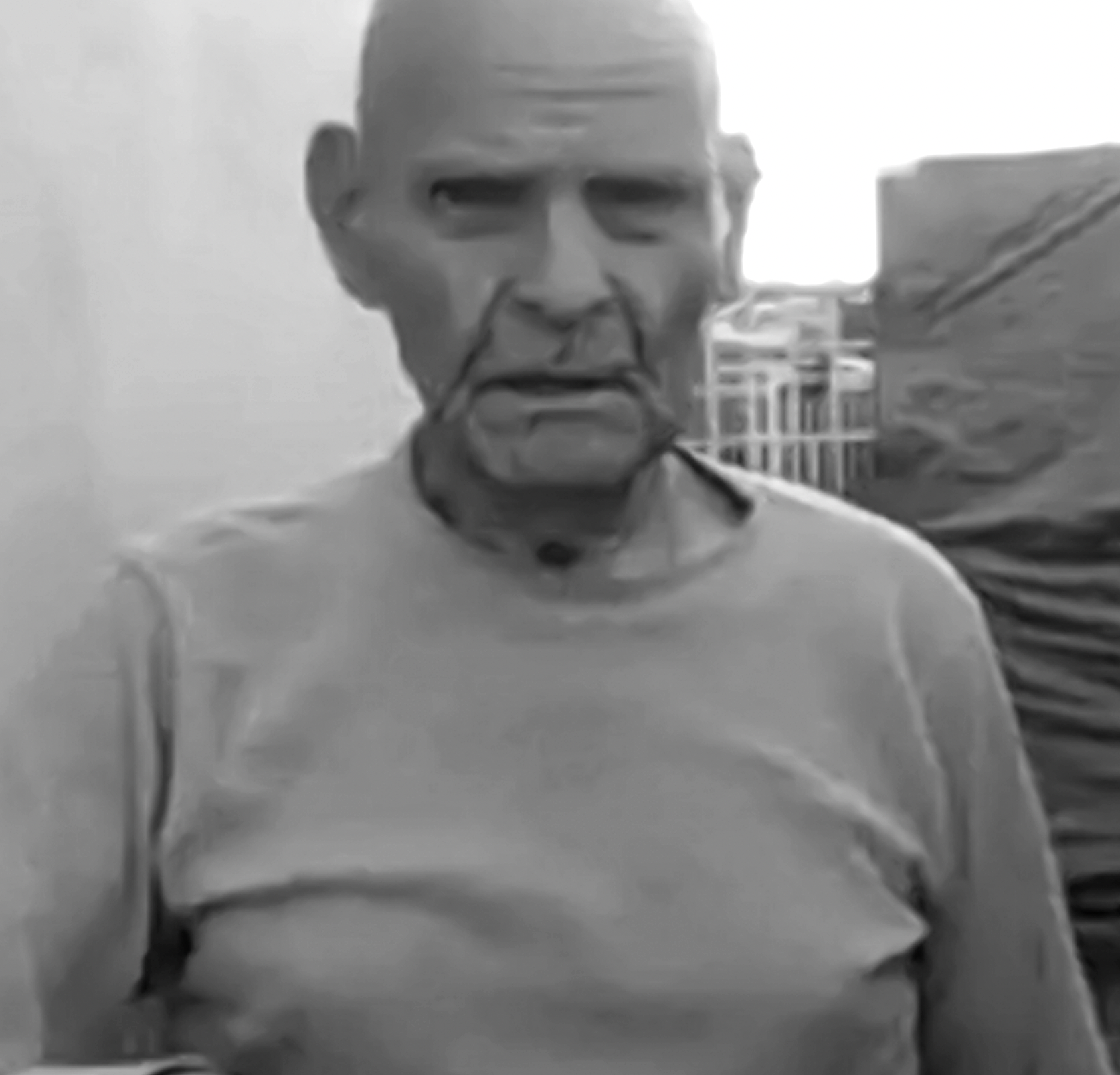
Based on research and interviews we created personas to define and center our solution around the needs, goals, and pain points of caregivers and people with dementia. The persona allowed us to present our findings to reference later.
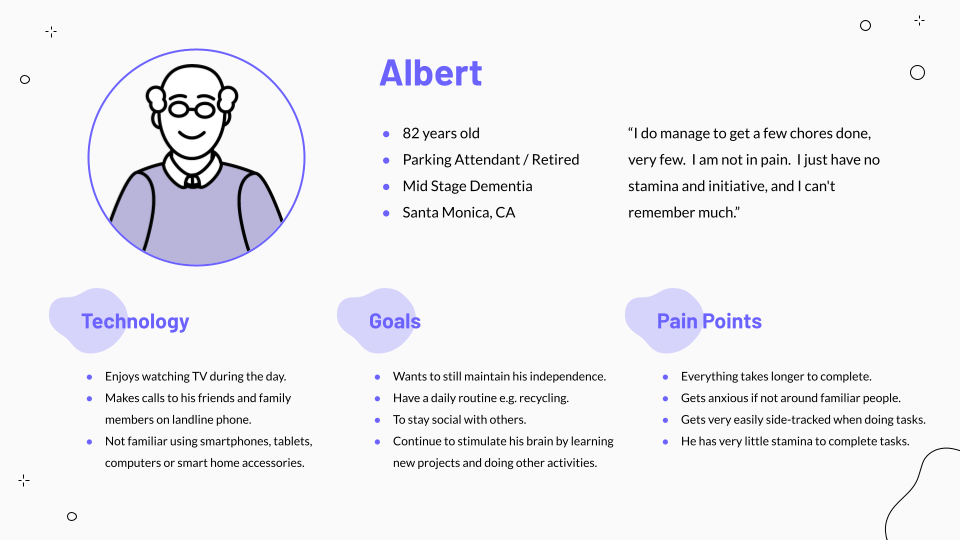
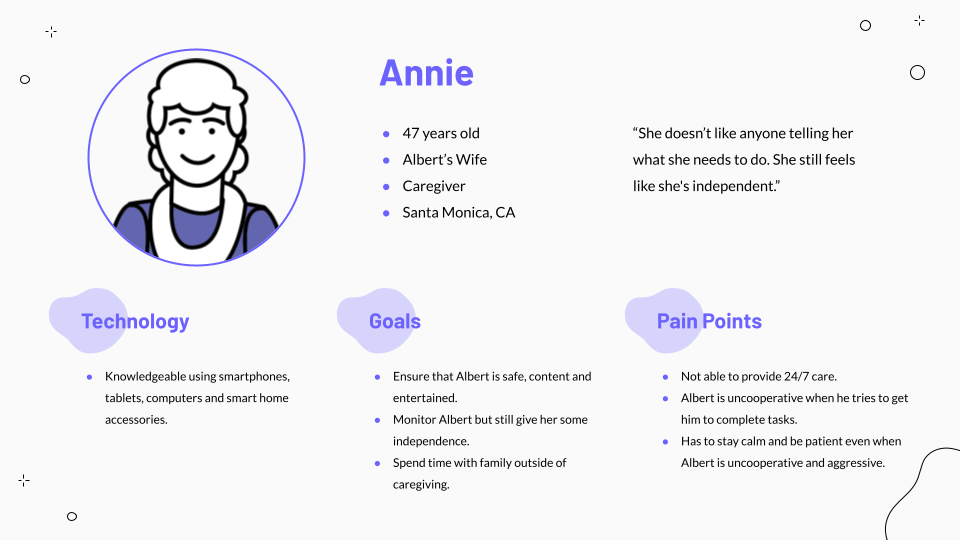
We created a mobile app prototype on Figma which would allow caregivers to input tasks and activities. The reminders would sync to the smart TV device to remind patients of their daily tasks.
Version 1
On our first round of prototyping we kept screens simple and basic. We wanted to get a general understanding of the layout and user flow that caregiver would need to input tasks for the person with dementia.
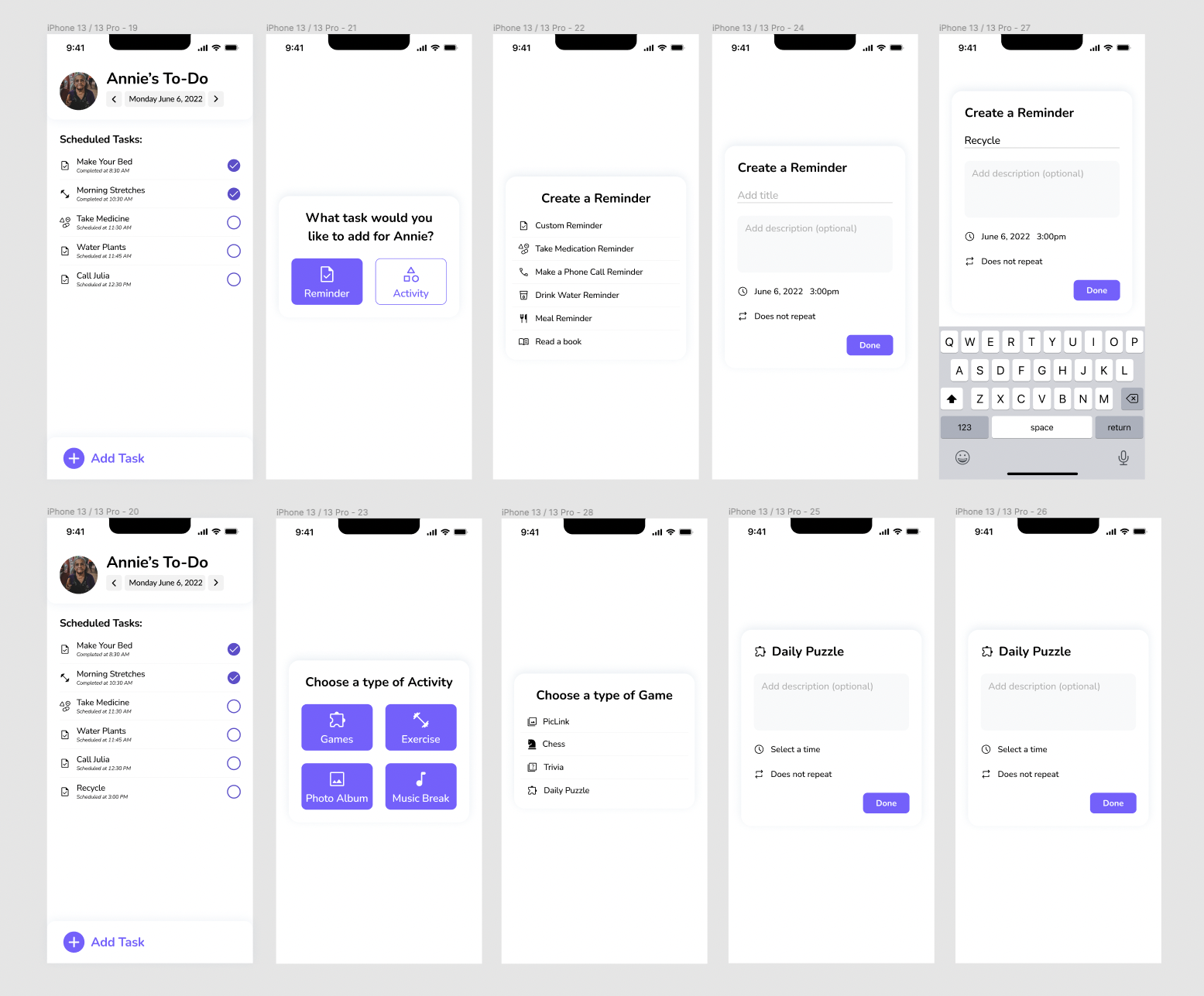
Version 2
We decided to add more illustrations to our final prototype based on feedback that our screens needed to be more visual for caregivers. We also kept steps simple and short so caregivers could quickly input tasks for their patients.
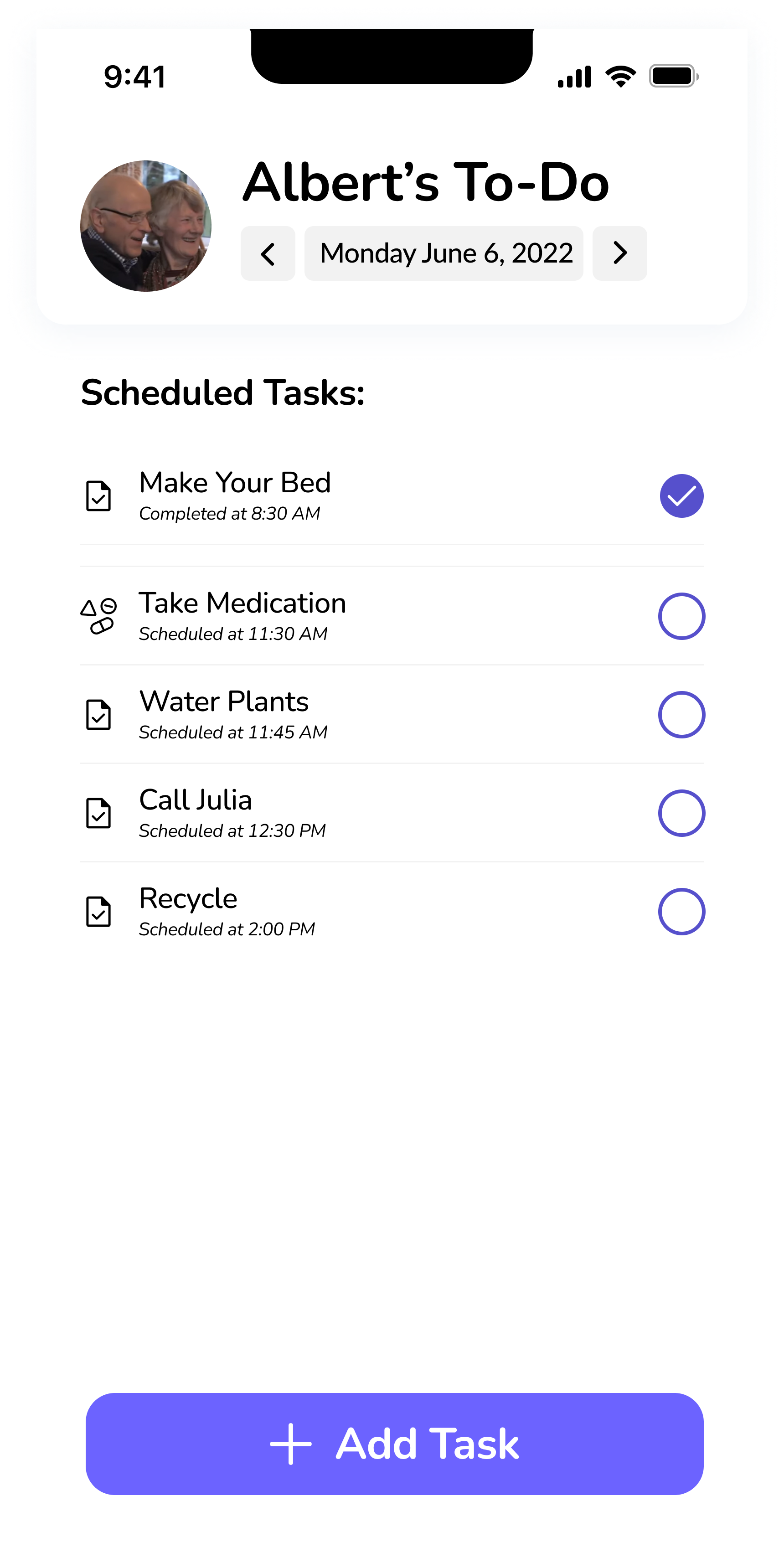
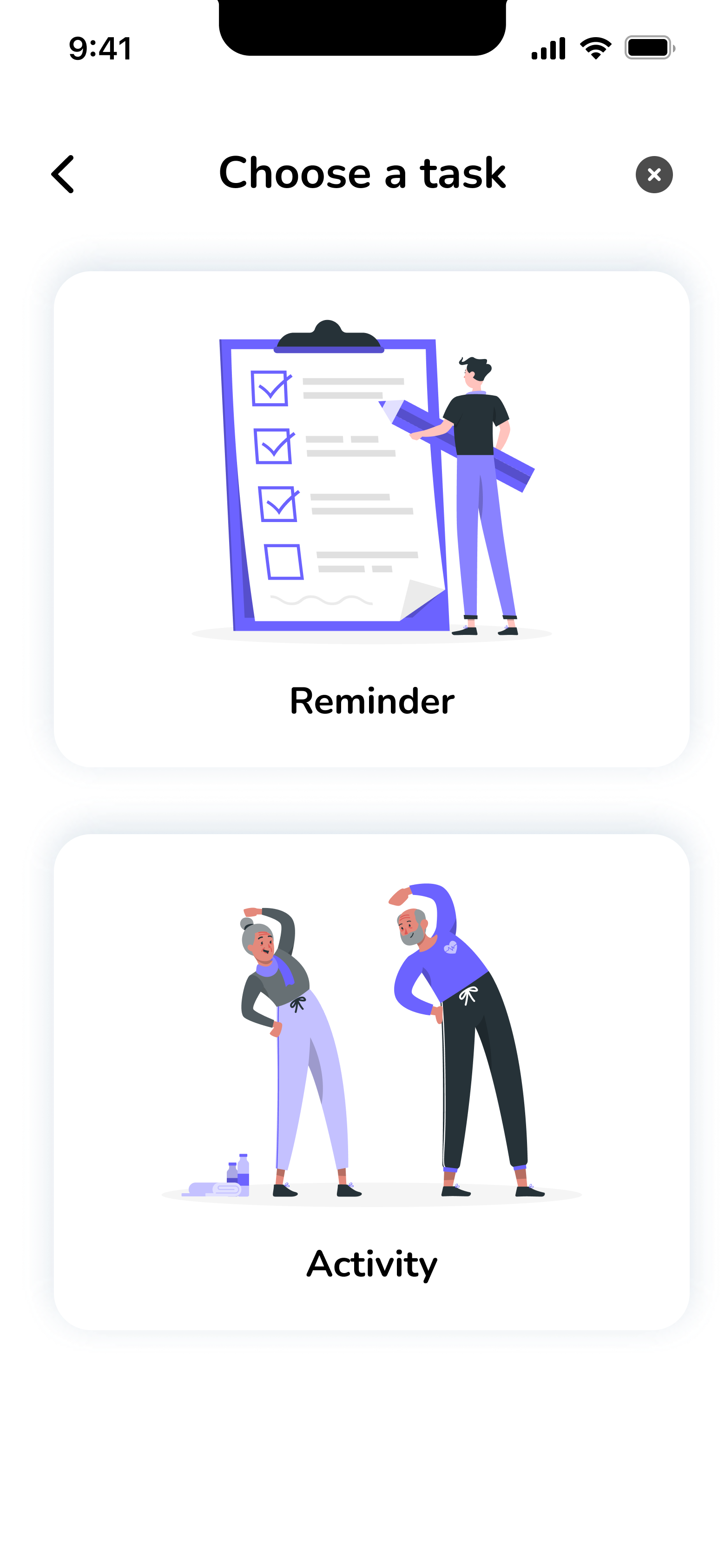
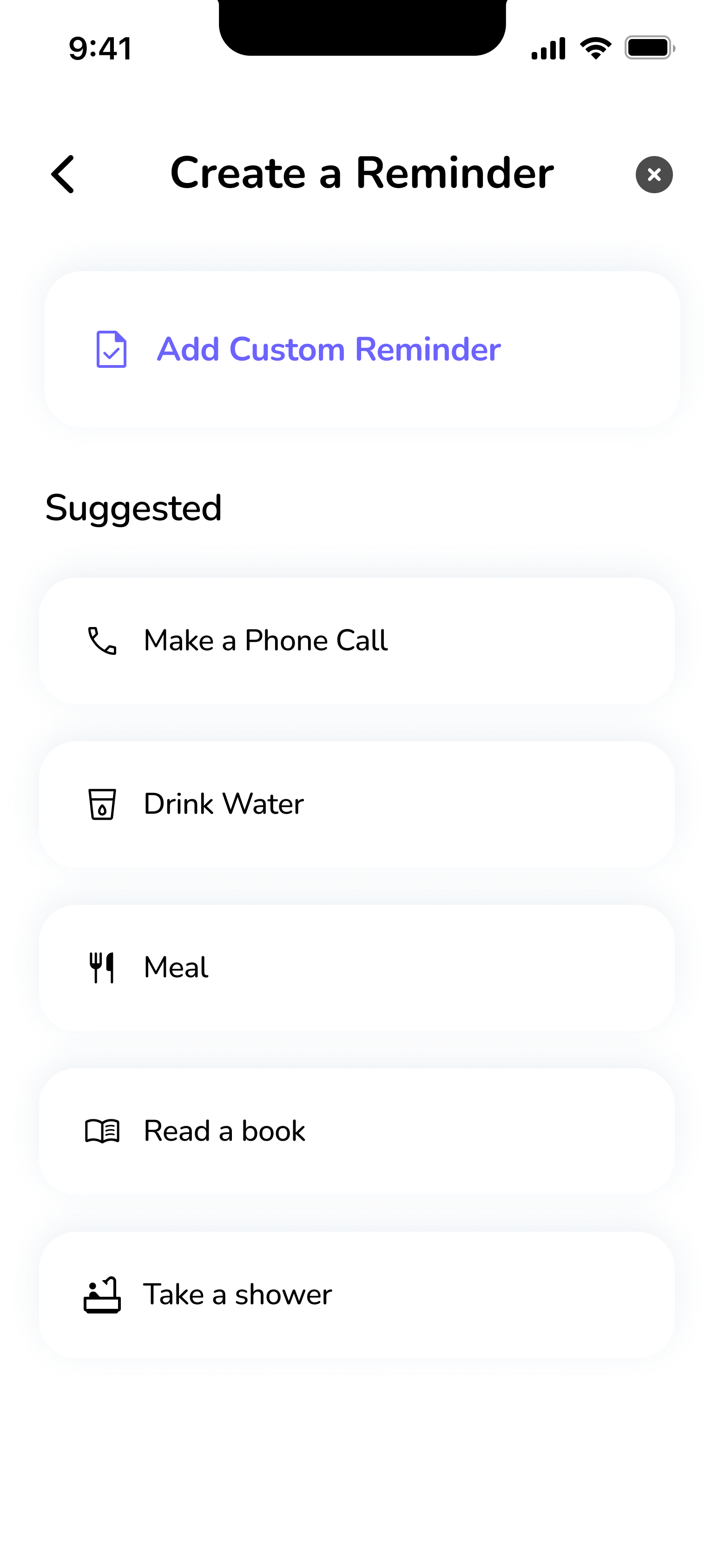
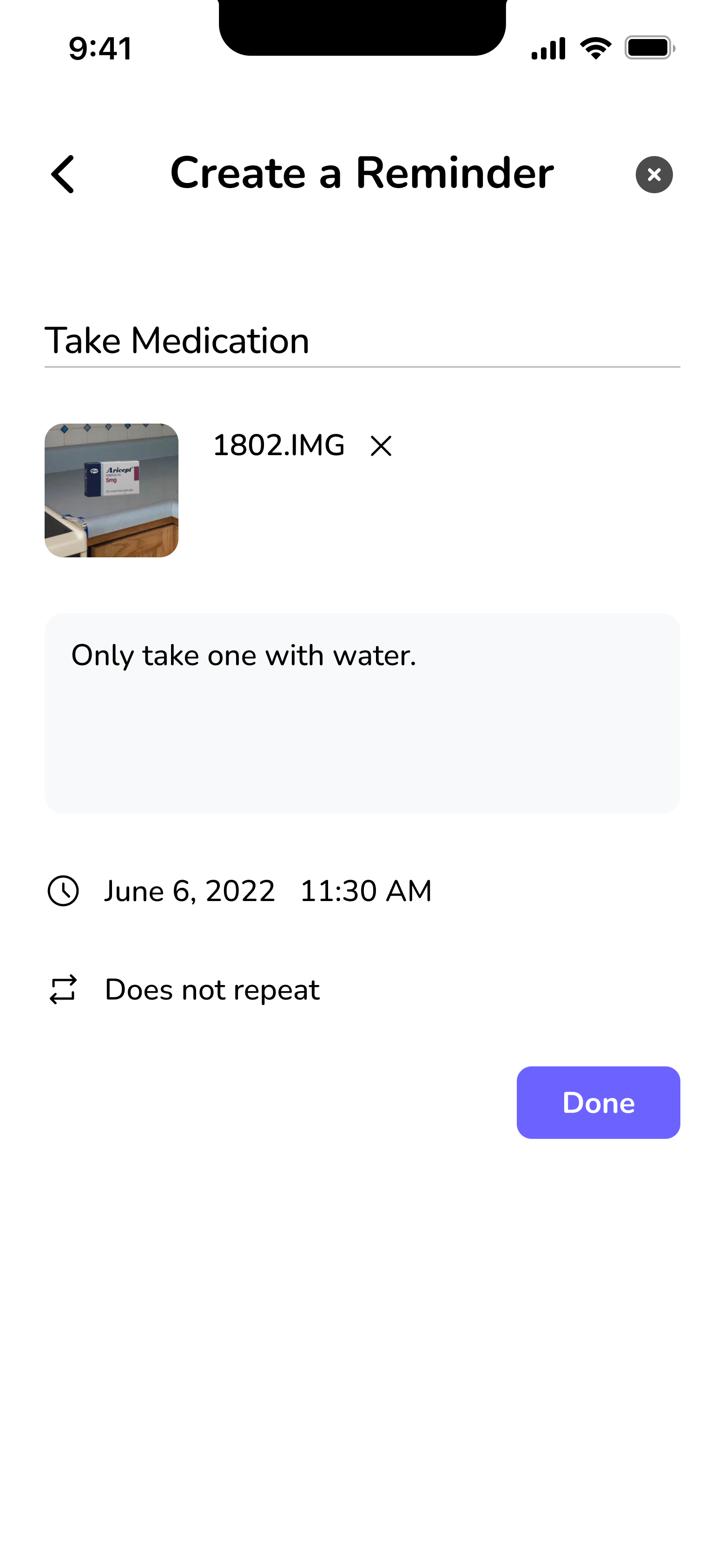
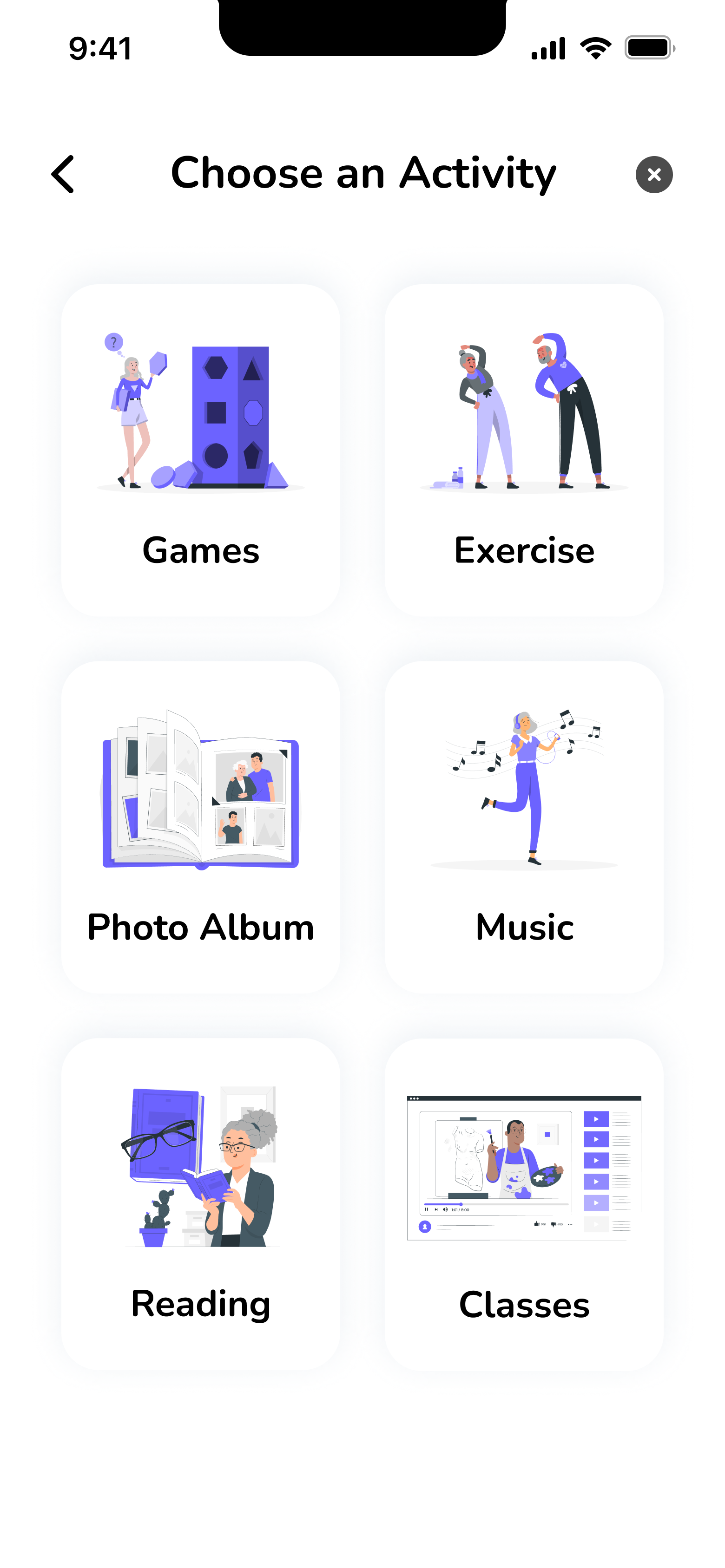

The smart TV app allows people with dementia to be reminded of daily tasks and do activities throughout the day such as games, exercises, photographs, and music. These activities offer mental, physical, and social stimulation that slows cognitive deterioration.
Version 1
On our first round of prototyping for the TV we conceptualized a way to visualize reminder notifications on the screen. We also needed to change Memo’s smartphone app home screen to fit in a horizontal screen like the television.
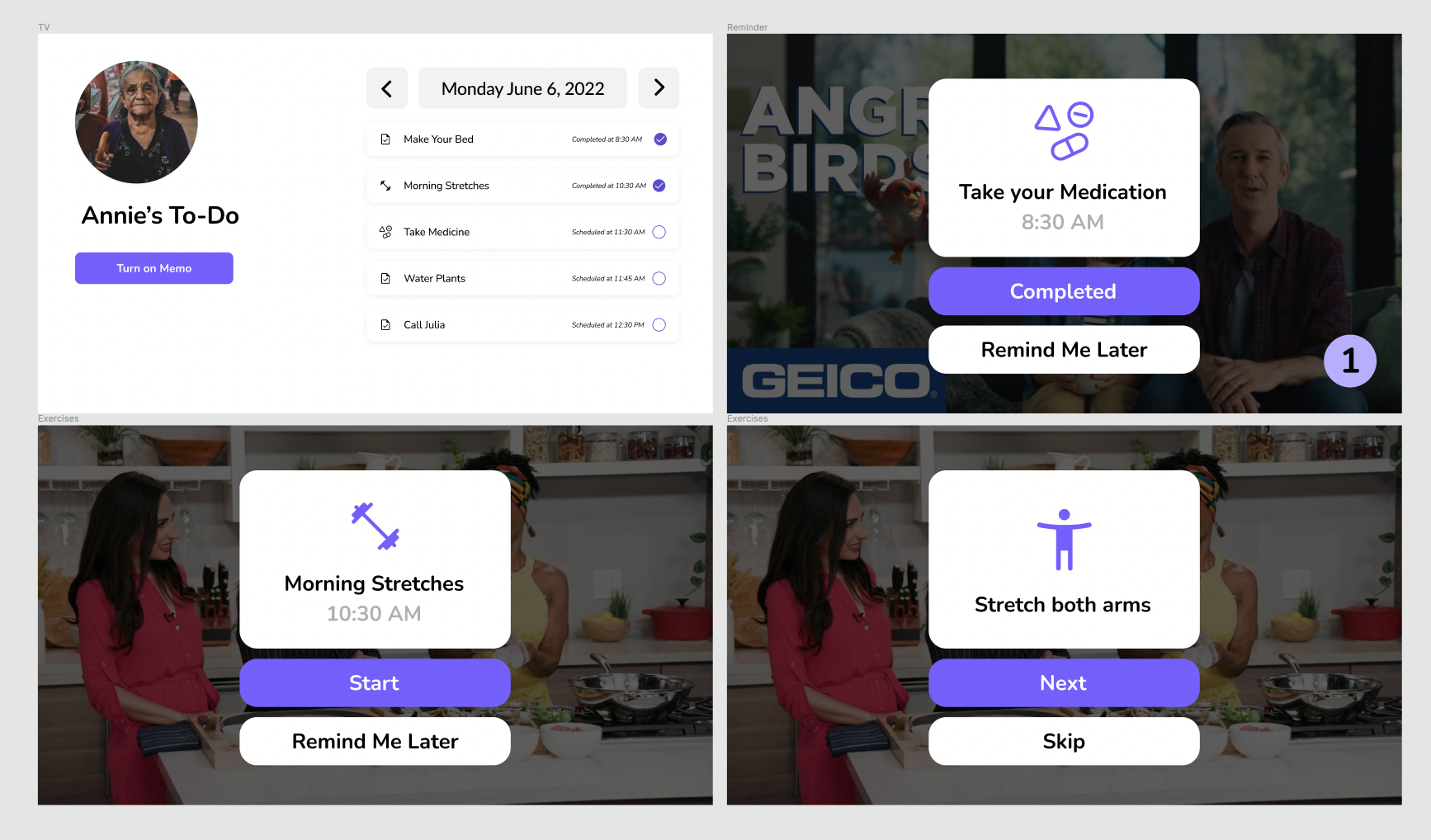
Version 2
We implemented a speech feature, so that memo could speak aloud reminders and we learned that they needed to use a conversational language. We added visuals to reminders and activities and make other changes based on user feedback.
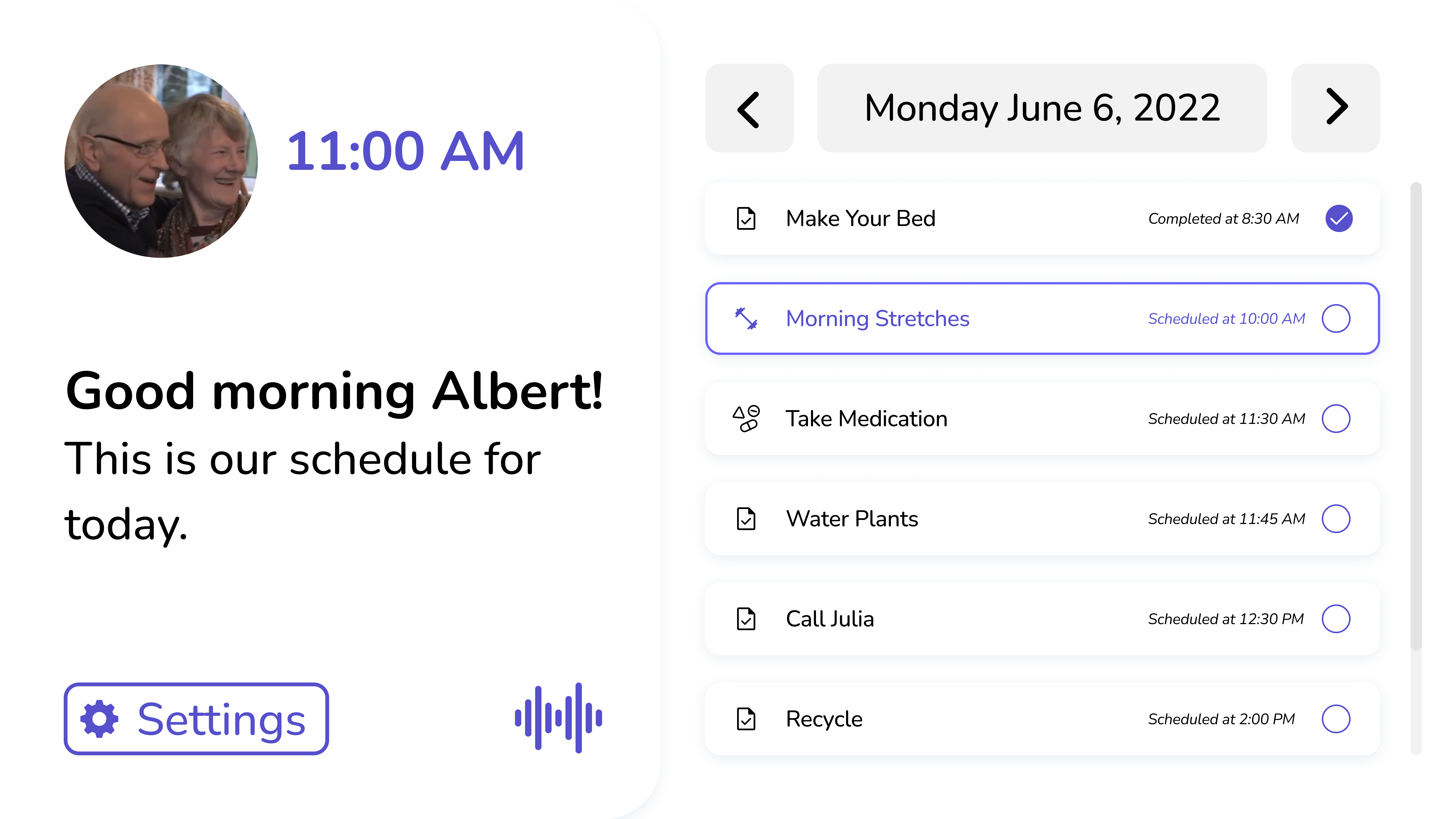
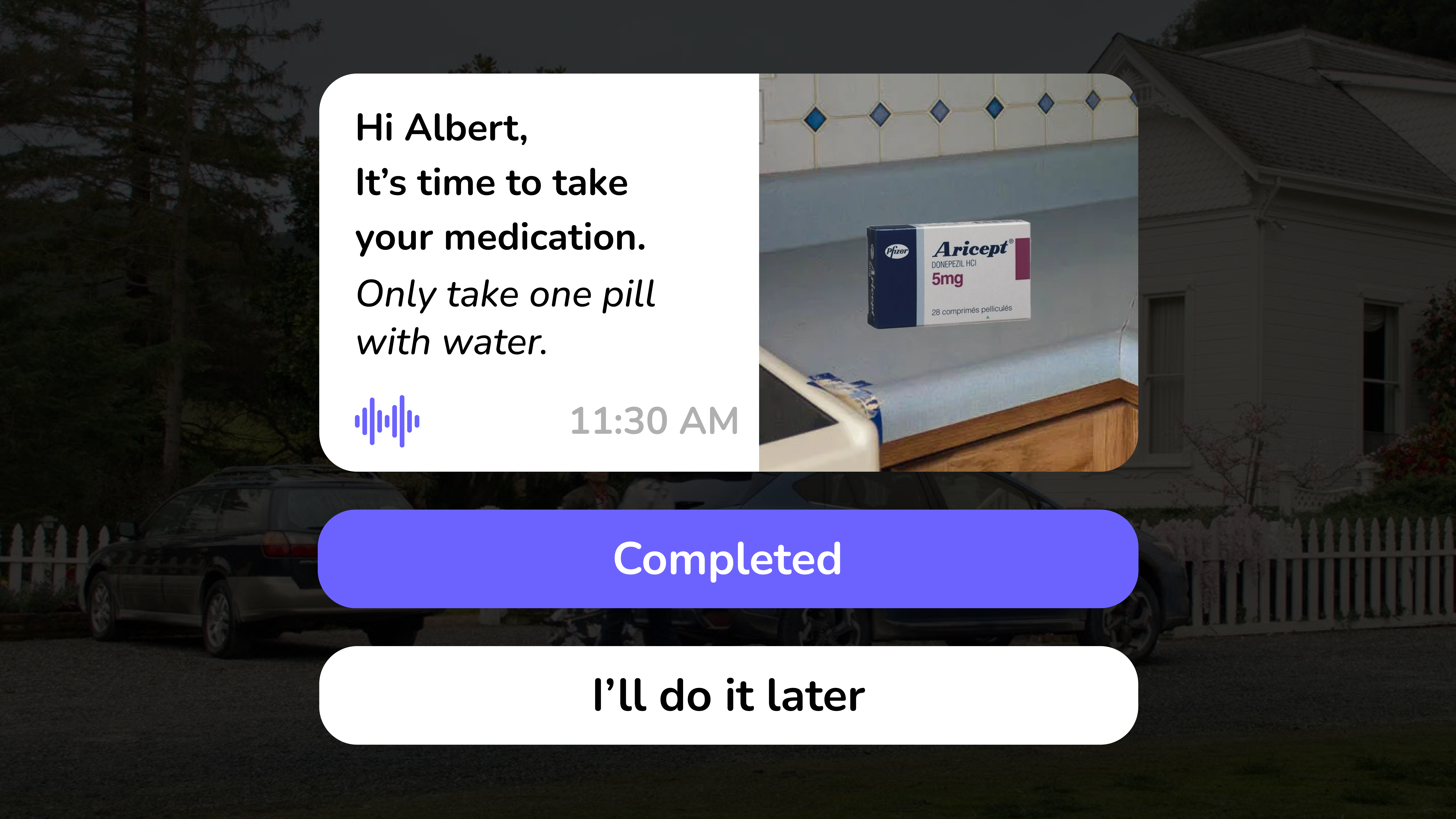
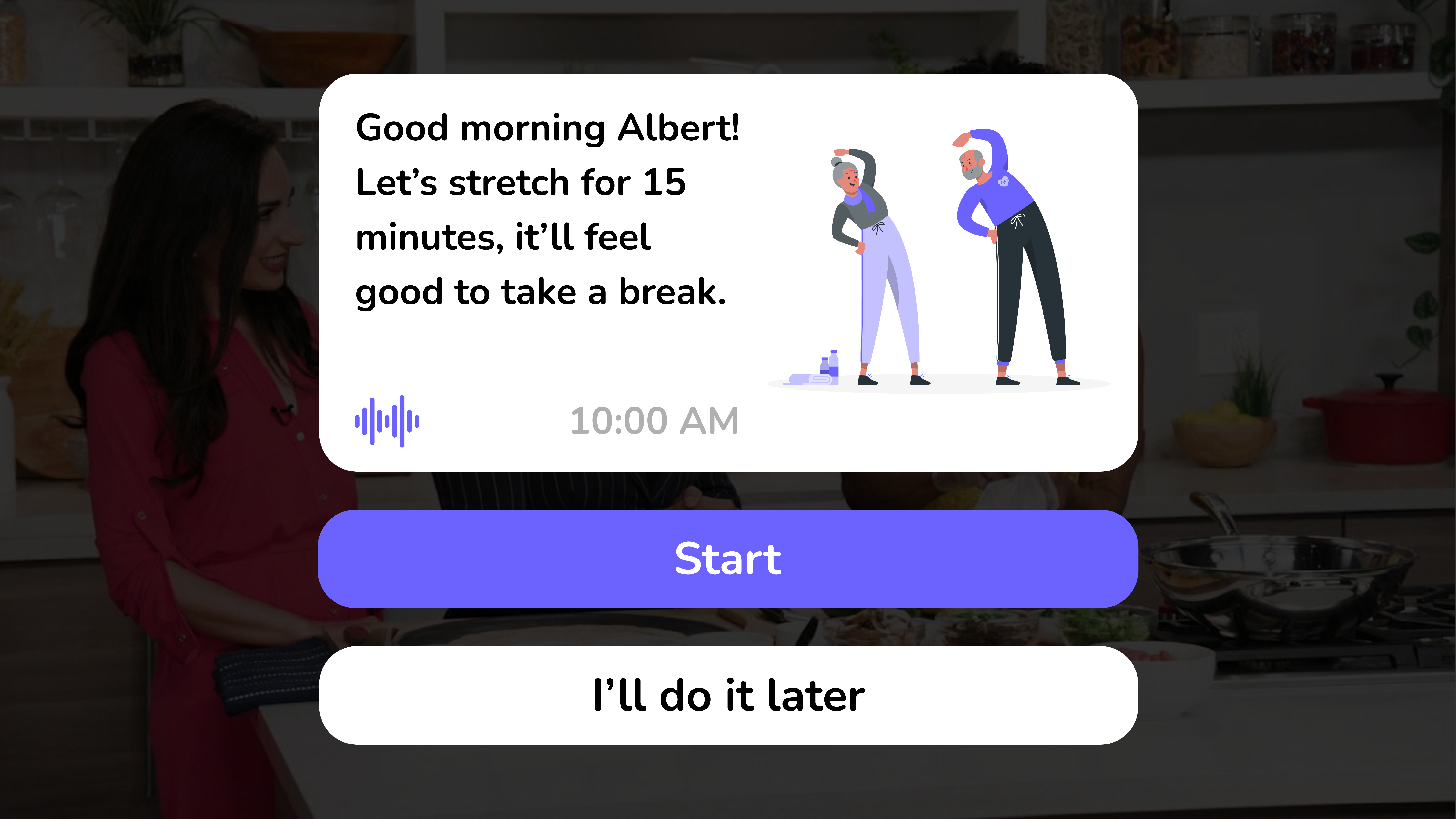
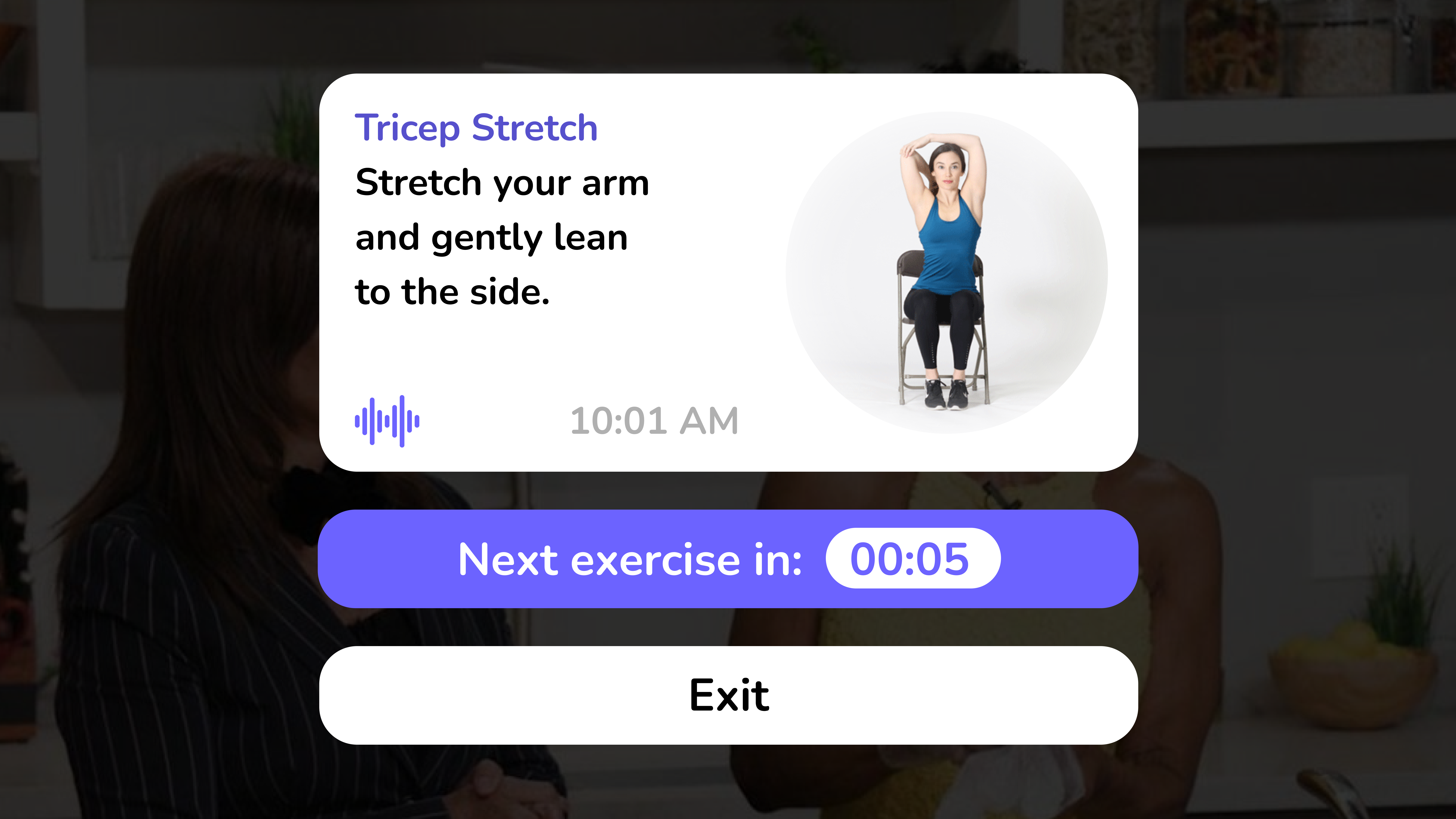
We tested our app to see if caregivers could set reminders and understand the app flow. We also tested our Smart TV prototype for legibility.
"I like it because, if we get sidetracked doing something else, at least something is there, physically telling them […] So we don't have to be hovering over him because that's what he gets upset about."

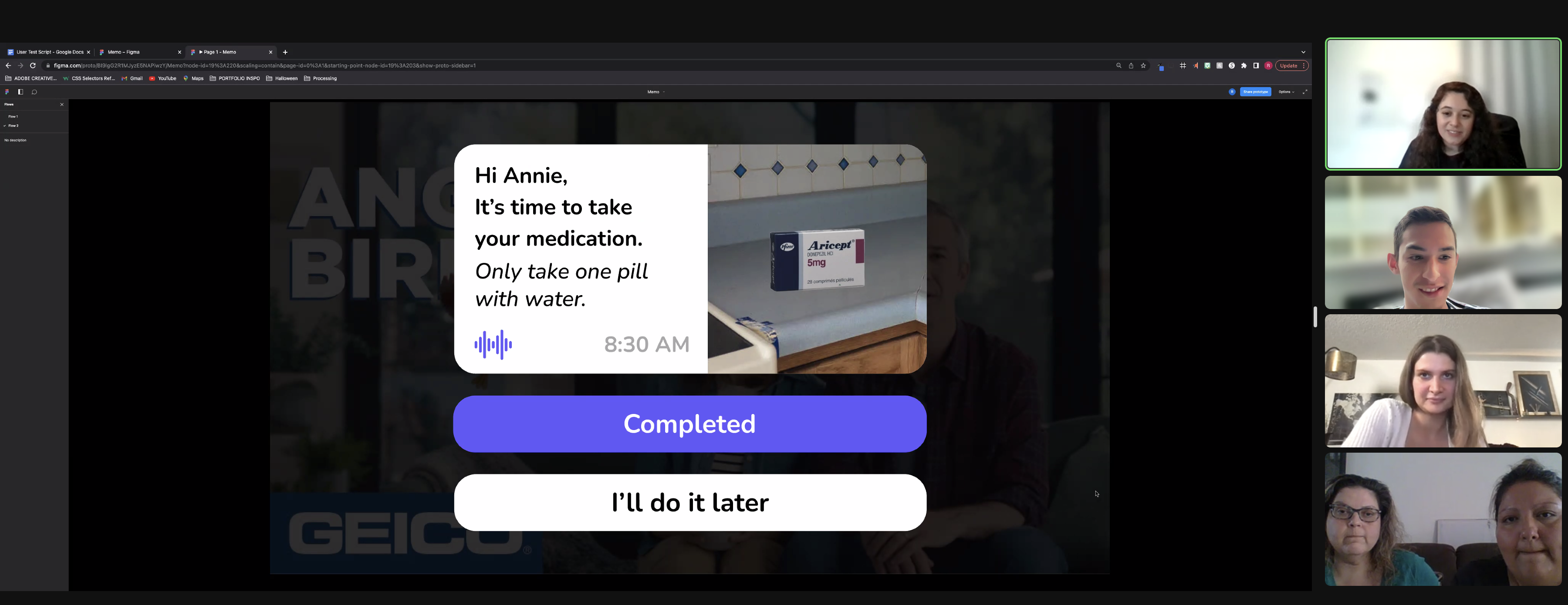
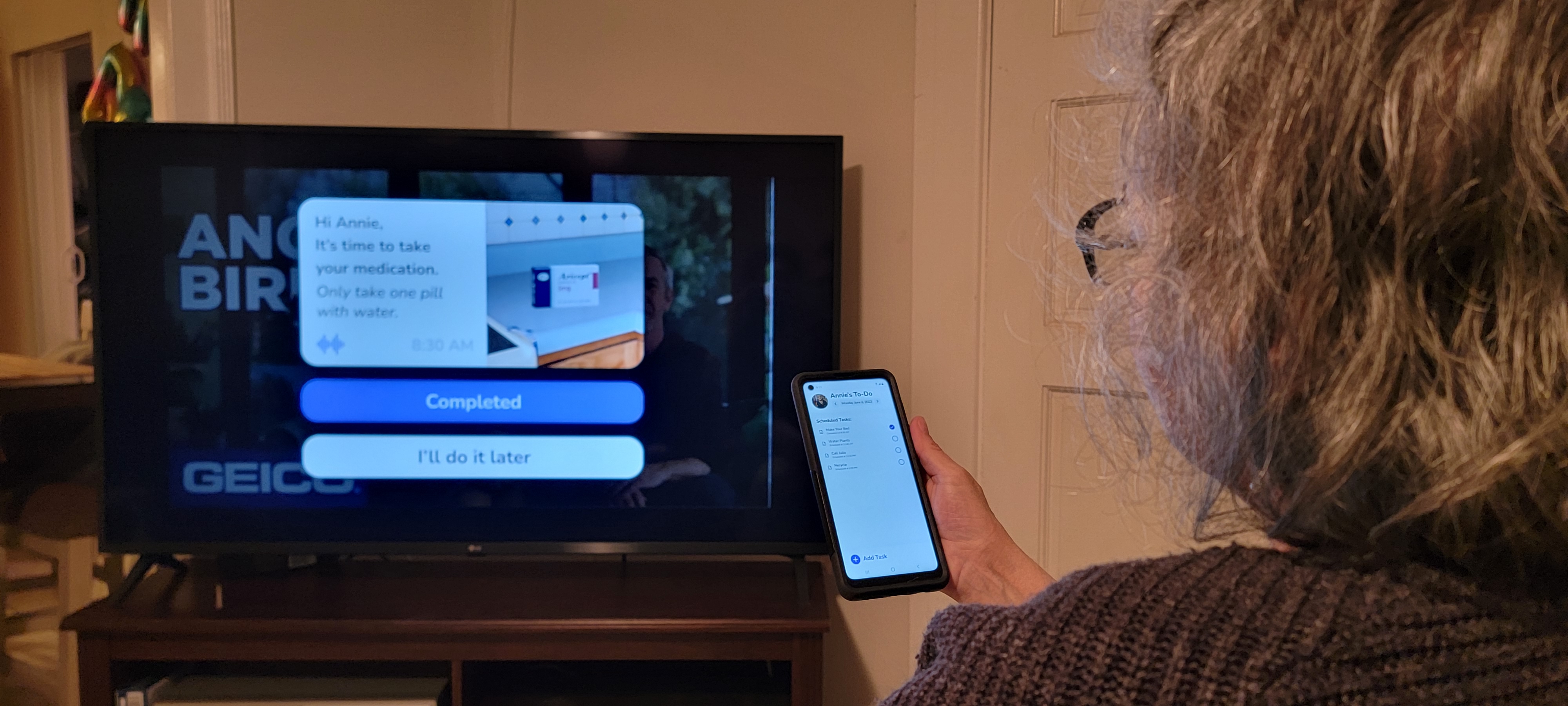
I thought our narrative presentation structure was strong. We worked well together and incorporated feedback to revise our presentation multiple times. I also thought our chosen platform, the TV, was the ideal touchpoint for a person with dementia.
Acquiring an interview with someone with dementia was difficult for us. We struggled to find a person with dementia who could give competent consent and understand the purpose of the interview. Although, the netnography helped us answer gaps and pain points from the caregiver interview and gave us the perspective of people with dementia.
Caregivers carry a lot of the responsibility. In the future, I'd like to look into how to automate Memo task creation so that creating and updating routines are faster and less strenuous for the caregiver. Additionally, I would center the final presentation around the caregivers perspective.